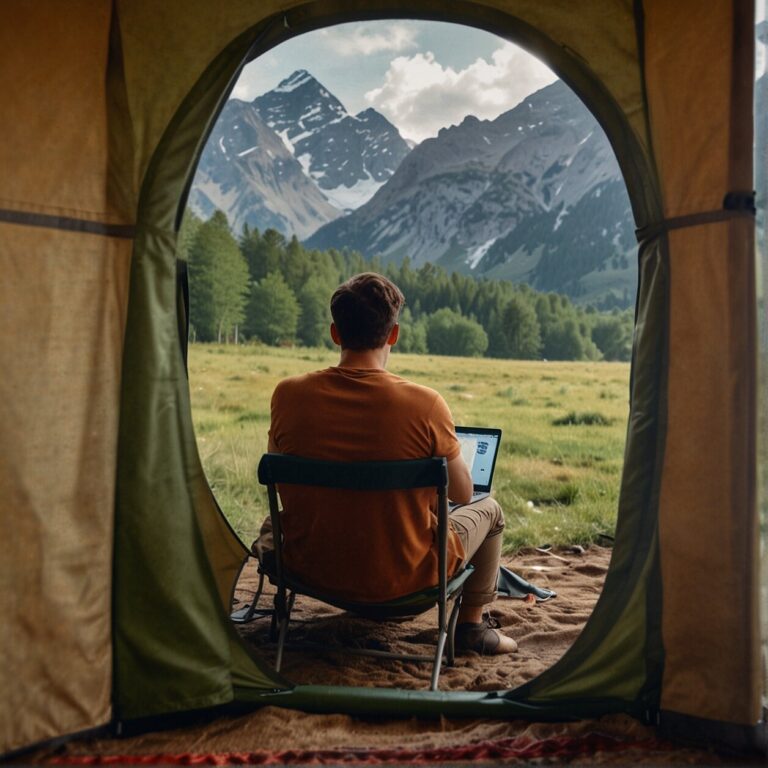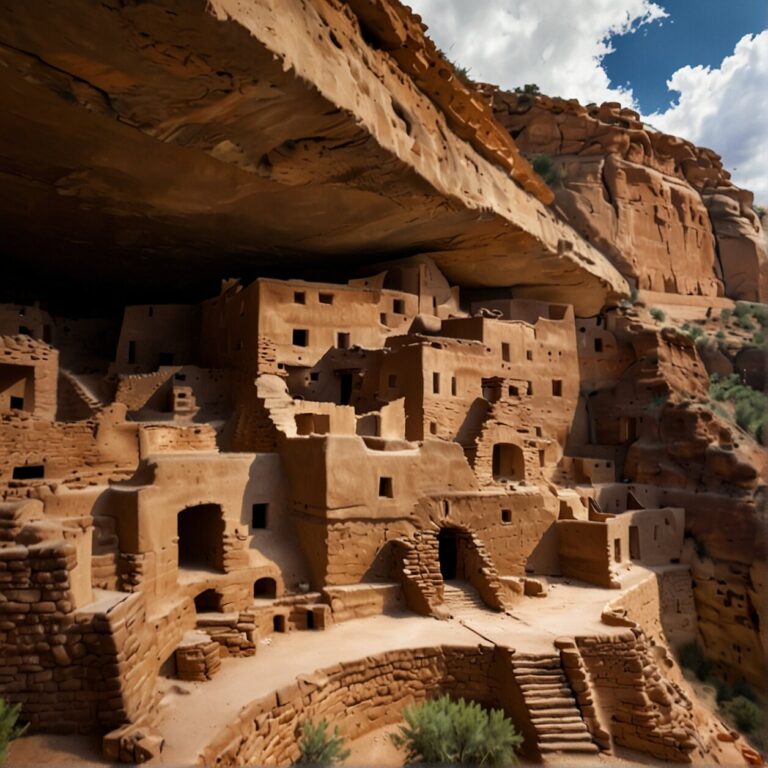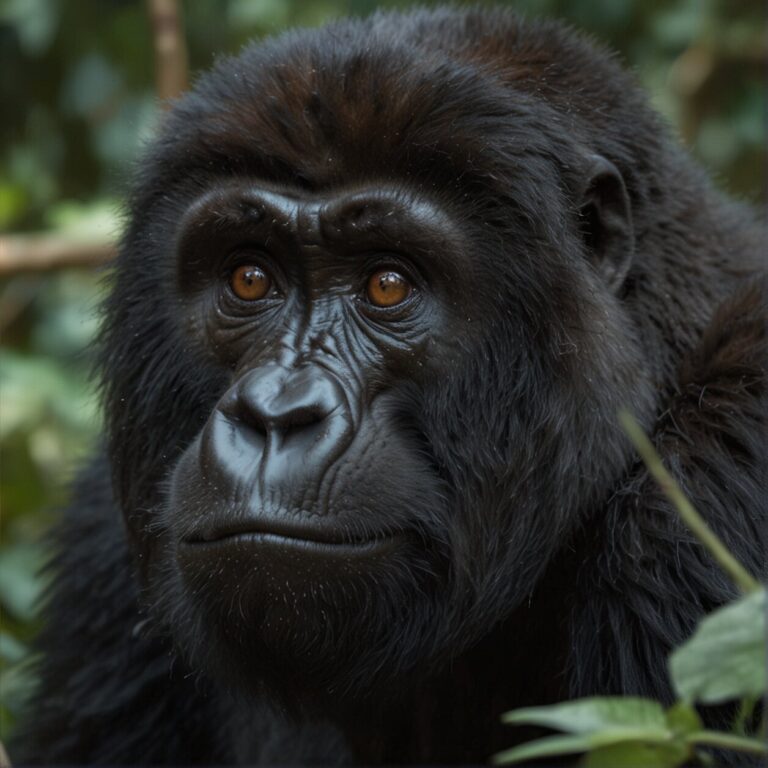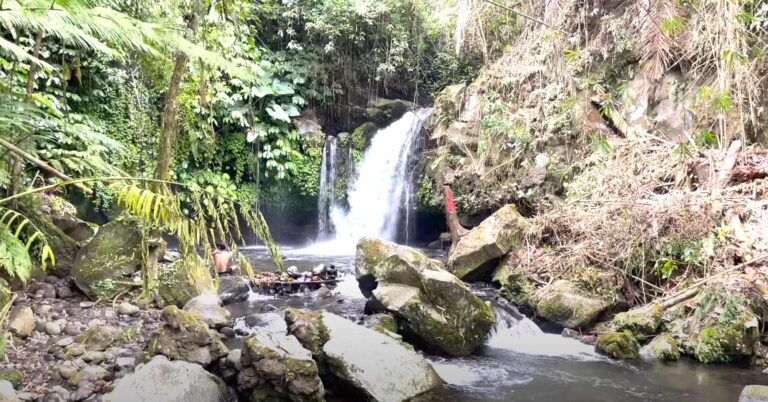Tracking Komodo Dragons in Indonesia
Imagine standing in the wild under an azure Indonesian sky, in the heart of pristine landscapes, facing the world’s largest lizard, the Komodo Dragon. This incredibly unique adventure isn’t a mere fantasy, it’s a thrilling reality you can experience at the Komodo National Park. Wrestling with size, power, and curiosity, these majestic giants find their refuge on the secluded islands of Komodo, Rinca, and Gili Motang. To help you join this wildlife adventure and deepen your understanding of this fascinating predator, we’ve put together an informative guide with invaluable tips about responsible and enjoyable tourism.
- Discover the thrill of encountering a Komodo Dragon in its natural habitat.
- Learn what to expect from a Komodo Dragon wildlife tour and how to choose the best one for you.
- Prepare for the physicality of this unique adventure.
- Understand how to be a responsible tourist and contribute to the protection of these awe-inspiring creatures.
As responsible adventurers, we owe it to the dragons and to ourselves. We’re visiting their home and playing by their rules. This is the heart of eco-travel – adventures with minimal impact, for a maximum thrill.
Unveiling the Mysteries of Komodo Dragons
Stepping onto the rugged terrains of Komodo Island, you’re entering an ancient world inhabited by a real-life dragon – the magnificent Komodo. These reptiles, largely unchanged for millions of years, possess a mystique that arouses awe and curiosity.
So you may ask, “What’s the secret behind their survival?” Well, these giants are evolutionary marvels. Their large size helps retain body heat, allowing them to sustain forage activities at relatively low temperatures. As opportunistic predators, they feed on carrion, supplementing this with live prey. They’re excellent swimmers too, crossing from island to island in search of food.
But did you know that a bite from a Komodo dragon was once believed to be venomous? Recent research, however, betrays this assumption. Instead, their secret weapon lies in their saliva teeming with 50 types of bacteria. An animal bitten by a Komodo may escape the encounter, but often succumbs to infection days later.
Another intriguing feature of Komodo dragons is their reproduction system. Usually, they are sexually reproducing creatures. But in certain instances, they undergo parthenogenesis, a form of asexual reproduction. In the absence of male partners, female Komodo dragons lay fertilized eggs, thereby ensuring the survival of their species.
Seeing these creatures in their natural habit is indeed an incredible experience. Remember, while their savage beauty triggers our thrill, they are not monsters to fear but fascinating creatures to understand and preserve.
Finding the Right Tour: What to Look for in a Komodo Dragon Wildlife Tour
Knowing what exactly you should be looking for when choosing a tour can be challenging. To ease the process, we’ve compiled a list of a few essential aspects to keep in mind:
Reputation and reviews
Getting insights from former travelers is the best way to know what to expect. Look for companies with the highest reviews on platforms like TripAdvisor, or referrals from adventure travel networks. Get a sense of their consistency, dependability, and level of service.
Knowledgeable and experienced guides
Your guide can make or break your experience. Choose tours led by knowledgeable guides passionate about their work and familiar with the intricacies of Komodo National Park. A local guide can provide invaluable insights and ensure your experience is not only engaging but also safe.
Group size
The size of the tour group matters. Smaller groups often mean a more personalized engagement with your guide and a lower impact on the local ecosystem. While larger groups may be more economical, they might also jeopardize the quality of your experience and the wildlife’s wellbeing.
Sustainability practices
As responsible travelers, we all have a part to play in protecting the diverse wildlife and ecosystem of the Komodo National Park. Hence, look out for tour companies that implement sustainable practices and adhere to guidelines promoting responsible tourism.
Value for money
Lastly, consider the cost. However, it’s important not to focus solely on cheap options. Evaluate the value you’re getting for your money. This could mean ensuring the tour company provides quality gear, includes park fees, or offers onboard meals, among other benefits.
Choosing the right tour is a fundamental stepping stone to your Komodo dragon adventure. Look beyond the basics like the itinerary and duration, and delve into what truly matters for a meaningful and respectful wildlife experience.
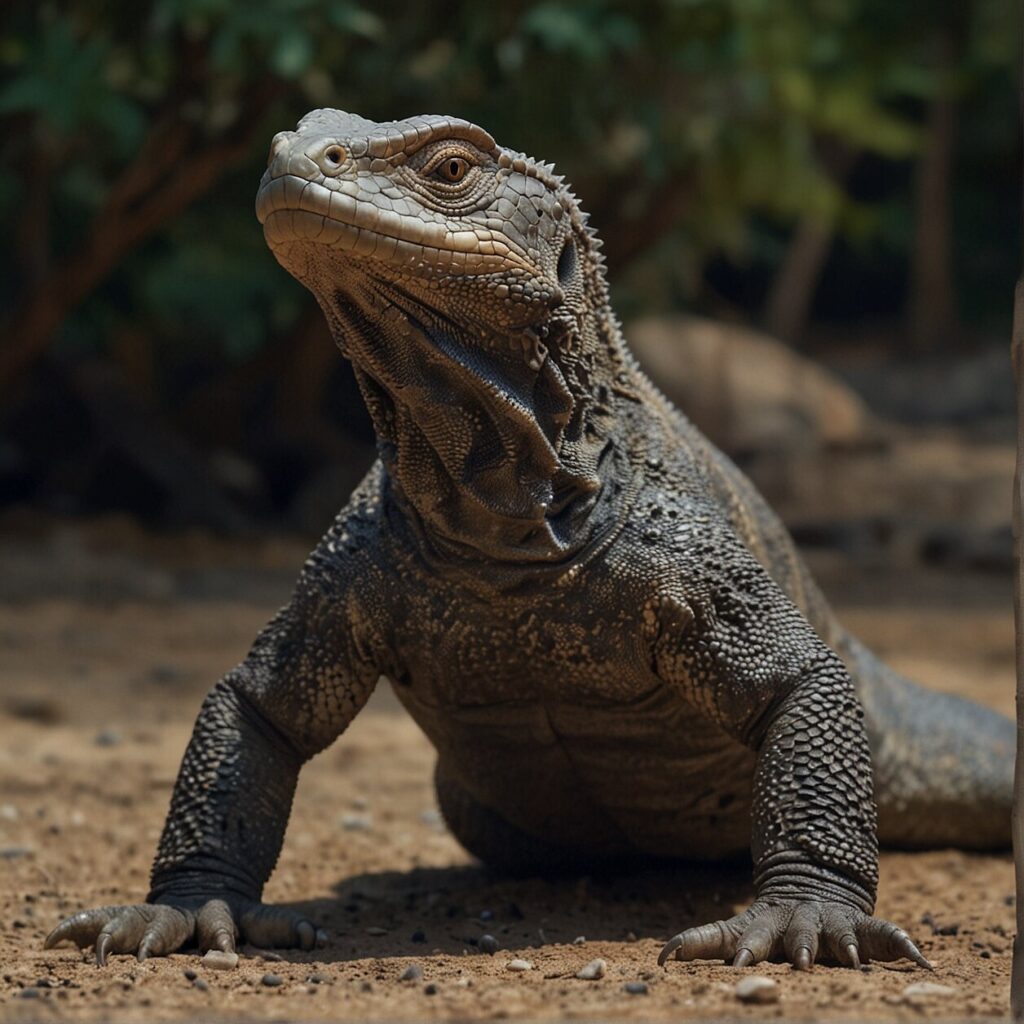
Komodo Dragon Trip: Setting Realistic Expectations
Entering the world of Komodos, you’re stepping into the vast wilderness inhabited by the world’s largest living lizards. It’s crucial to keep your expectations realistic.
Firstly, it’s important to recognize the unpredictability of any wildlife encounter. Understand that Komodos are not domesticated creatures – they are wild, ferocious and elusive. They move and behave on their own terms. While your guides do their best to facilitate sightings, they can’t guarantee them. Each encounter is unique and unscripted, adding to the thrill and authenticity of the adventure.
Secondly, don’t expect luxury. Komodo National Park is in a remote location. The amenities and infrastructure may not be what you’re usually accustomed to. This is a part of your adventure, an opportunity to step out of your comfort zone and immerse yourself in an authentic, truly wild experience.
Lastly, the climate can be unpredictable and can sometimes alter plans. There might be times when you need to adjust to the conditions and changes to the itinerary might have to be made. Rain or shine, always remember that Komodo Island is home to an extraordinary ecosystem that deserves our respect and protection.
Like any great adventure, a trip to see Komodo dragons is filled with uncertainty and excitement. But with the right attitude and respect for nature, it can be an exciting and transformative experience.
Behind the Scenes: Preparing for Your Komodo Dragon Expedition
Before you set foot on Komodo Island, there are a few more things you need to remember. Firstly, a little physical preparation goes a long way. The treks in the park can be demanding, especially during the dry season when temperatures can soar. Don’t underestimate the value of regular exercise in the weeks leading up to your adventure. This will ensure you have the stamina to fully enjoy your experience on the island.
Next, remember to do your homework and read about the park and its inhabitants. This will not only increase your anticipation but will also allow you to appreciate the experience at a much deeper level. From the rich biodiversity of the area to the unique behaviors of the Komodo dragon, knowledge is key to a more immersive experience.
On a more pragmatic level, ensure your travel insurance covers this kind of adventure. While all good tour operators prioritize your safety, it’s better to be protected in case of the unforeseen.
What to Pack
Let’s discuss what should be in your luggage for this unique adventure. Comfortable hiking footwear is a must. It’s vitally important to protect your feet during treks across the sometimes challenging terrain. Sunscreen, hats, and light clothing will safeguard you against the tropical sun, while bringing rainwear is wise in case you encounter a sudden downpour.
In addition to your clothing, you might also want to pack binoculars for observing wildlife from a distance, as well as a quality camera to document your unforgettable encounters. Don’t forget spare batteries or power packs to make sure your gear is always ready to capture those once-in-a-lifetime moments.
Lastly, please remember that while the island’s vendors do sell supplies, taking along your own reusable bottles and lunch boxes helps cut down on waste, promoting an environmentally friendly tour.
Health Considerations
Even the world’s largest lizard can’t compete with mosquitoes when it comes to posing a health risk. It’s advisable to consult with your local travel clinic or doctor regarding appropriate vaccinations and antimalarial medication. Also pack a small first aid kit, including insect repellent and any personal medicine you require.
With a little bit of preparation, your Komodo Dragon Expedition promises to be a sensational and unforgettable adventure. Stay respectful of the habitat, follow your guide’s instructions, and get ready to marvel at one of the world’s most fascinating creatures in its natural environment.

Adventure with Responsibility: Your Role in Protecting Komodo Dragons
As an adventurer, your journey doesn’t just revolve around the thrill of exploration. You also carry a torch for protecting endangered species like the Komodo dragon. Tourism, when done responsibly, plays a significant role in conserving these unique creatures. Here’s how you can do your part.
Respect their Space
Treading upon Komodo beaches and hills, remember, you’re a guest in the dragon’s home. Observe the dragons from a safe distance, under all circumstances. Maintain silence around them, and avoid direct eye contact as they can perceive it as a threat.
Don’t Interfere with Natural Behavior
Never feed or attempt to touch a Komodo dragon. Any interference with their natural behavior can lead to unfavorable outcomes, not just for your safety but also for the health and well-being of these giant reptiles. Let nature take its course, observe, and enjoy unobtrusively.
Support Local Communities
Purchasing local products and services provides income for the communities living around Komodo National Park. This helps them recognize the value of the local ecosystem and contributes to the protection efforts of Komodo dragons. So, don’t forget to support local handicrafts or dine at community-run eateries.
Avoid Single-Use Plastics
Plastic waste significantly harms the environment. Please contribute to the efforts to keep Komodo National Park free of plastic waste by avoiding single-use plastics. Reusable water bottles, plates, and cutlery are good substitutes to pack for your adventure.
Participate in Conservation Programs
You may also wish to further your support by joining or donating to organizations involved in Komodo dragon conservation. Their research, breeding programs, and local awareness campaigns rely substantially on donations and volunteers.
Remember, as an adventurer, you contribute significantly to the preservation of the world’s largest lizard in its natural habitat. Together, we can ensure a sustainable future for Komodo dragons and the environment they call home.
FAQ’S
Welcome, fellow adventurers! The call of the wild is strong, the lure of the unknown is irresistible, and the thrill of the extraordinary is incomparable. Nowhere is this more true than in the untamed expanses of the Komodo islands, where the world’s largest lizards, the Komodo dragons, roam. This is the stage for a unique wildlife encounter that will forever be etched in your memory.
This article aims not only to prepare you for the adventure of a lifetime but also to inform and educate you about experiencing this incredible meeting with nature in a responsible and sustainable way. Let’s embark on this exciting journey of discovery, where information meets intrigue, and adventure intertwines with awareness!
What are the best Komodo dragon wildlife tours?
Defining the “best” Komodo dragon wildlife tour can be subjective and greatly depends on your personal preferences, interests, and comfort levels. However, several tour operators consistently stand out for their commitment to quality, safety, informative guides, and sustainability practices.
Komodo Wanderlust Tour is renowned for their experienced guides and intimate group sizes, ensuring a personalized and memorable tour. They exhibit a strong focus on eco-conscious practices, making them an excellent choice for the environmentally mindful traveler.
Another notable operator is Indonesia Juara which offers customizable plans catering to diverse needs, from wildlife photography to hiking and more. Their impressive knowledge of the archipelago ensures a rich and immersive experience.
For a luxury wildlife experience, consider Amanwana Komodo Expedition. Though higher on the price scale, they promise an unforgettable encounter with the Komodo dragons, enveloped in the comfort of high-end facilities and service.
Also, The Dragon Islands Tour by Komodo Adventures is a multi-day exploration capturing the essence of the Komodo National Park, its fascinating wildlife, and striking natural beauty.
Remember to thoroughly research and review the tour operators before booking. It’s essential to choose a tour that aligns with your comfort, interests, and the level of physical activity you desire.
What are the safety measures to take when visiting Komodo Island?
Visiting Komodo Island is an adventure of a lifetime and one that demands a certain level of caution to be safe and enjoyable. Thirdly, it’s crucial to remember that Komodo Dragons are not domesticated animals and human encounters can make them unpredictable.
Here are several safety measures you should take:
- Stay with your guide: It’s crucial not to wander off alone on the island. Your guide is well-trained in handling encounters with these creatures and understands their behavior better.
- Keep a safe distance: As much as possible, maintain a distance of approximately 10 feet from these creatures. This is the safe zone; anything less can trigger an aggressive reaction.
- Don’t provoke or feed the dragons: Any form of provocation, like making sudden movements or feeding these creatures, could lead to unfortunate incidents.
- Wear suitable clothing: Dress in long pants and sturdy, closed shoes to protect against potential bites from smaller critters and insects.
- Stay hydrated: The climate can be quite hot and humid. Bring enough water and hydrate regularly to fend off heatstroke.
Bear in mind, this is an adventure, don’t let the thrill block out the essence of safety. Yes, these safety measures may seem simple, but these are the first line of defense towards ensuring an accident-free experience on this magical island.
How can I contribute to responsible tourism in Komodo National Park?
Contributing to responsible tourism in Komodo National Park is a significant way to ensure the long-term survival of the magnificent Komodo dragons and the rich biodiversity this park houses. To do so, you need to adhere to several key practices, which centers around respect for the environment and local communities.
Firstly, always stay on designated paths and follow the guidance of your park rangers during your visit. These measures prevent disturbance to the dragons and other wildlife and protect the park’s natural habitats.
Secondly, you’re encouraged to support local businesses while you’re here. Shopping from local markets instead of commercial chains not only promotes local culture but also aids in the financial sustainability of the people who call this place home.
Next, carry out what you carry in. This includes any waste or litter. National parks don’t have the same waste management infrastructure as urban areas, so leaving litter can be harmful to both wildlife and the overall environment. If possible, minimize waste production by avoiding excessive packaging and choosing reusable options wherever possible.
Last but certainly not least, be a quiet observer. Any loud noise or actions may disrupt the behavior of the Komodo dragons and other wildlife in the park. Use binoculars, long-range camera lenses, and maintain your distance to avoid inducing unnecessary stress upon these magnificent, but often sensitive creatures.
By following these guidelines, you play a significant part in securing the future of Komodo National Park while also ensuring an enriching and respectful wildlife encounter. Commit to leaving no trace beyond memories, and taking home nothing but photographs and a deeper understanding of our planet’s diverse ecosystems.
How physically demanding is a trip to Komodo National Park?
A trip to Komodo National Park, home to the world’s largest lizards, is an adventure that requires a moderate level of physical fitness. Although you’ll be exploring mainly on foot, there are some steep ascents and descents. Average treks to view the Komodo dragons usually last between one to five hours.
It’s important to stay hydrated and wear right hiking gear. Remember, you’ll be walking under the blistering heat and dealing with unpredictable terrain. This isn’t a leisurely walk in the park—it’s a wildlife expedition in a unique and challenging environment. Be prepared for some physical exertion.
Visitors with health conditions or mobility issues should consult with their tour operators. There may be options for shorter, less strenuous tours. Everyone should have the chance to witness the power and majesty of the Komodo dragons in their natural habitat, but it’s crucial to do so safely!
Completing a Komodo expedition isn’t just a check on your travel bucket-list—it’s a physical achievement that will make the experience all the more memorable.
What are the ethical guidelines to follow when interacting with Komodo dragons?
We’re glad you asked this important question. Ethical guidelines are crucial on any wildlife adventures, especially with powerful creatures such as Komodo dragons. Let’s delve in.
Firstly, always follow the instructions of your guide. They are trained and experienced in handling encounters with these majestic beasts. Non-compliance could result in serious harm to you, your group members, or the dragons.
Secondly, never feed or attempt to touch a Komodo dragon. Remember, they are wild animals, not pets. Direct contact can disturb their natural behavior and may lead to aggressive reactions. Feeding can also make them dependent on humans for food, which is detrimental to their survival skills in the long run.
Thirdly, do not use flash photography. The sudden burst of light can startle and stress out the dragons. Always respect these creatures by causing minimal disturbance during your visit.
Last but not least, avoid littering or dumping trash indiscriminately. Komodo National Park is not only a home to the dragons, but also a critical habitat for a variety of other wildlife species. Keep it clean and protect its natural beauty.
Remember, observing these ethical guidelines not only safeguards your wellbeing but also contributes to the preservation of Komodo dragons and their natural habitat. Be a conscientious adventurer!



